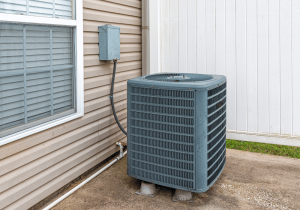Keeping your home warm during the harsh Canadian winters can feel like a battle—with your comfort, utility bill, and the environment all at stake. Enter the mini-split system, a modern alternative to traditional heating systems that’s gaining popularity for its energy efficiency and cost-saving benefits. If you’re a homeowner looking to cut heating costs without compromising warmth, mini-split systems may be the solution you’ve been searching for. This blog will walk you through how mini-split systems work, their advantages, and why they’re a smart investment for those who care about energy efficiency and their budget.
 What Are Mini-Split Systems?
What Are Mini-Split Systems?
Mini-split systems, also referred to as ductless heating and cooling systems, are compact, highly efficient systems designed to regulate the temperature of individual rooms or zones in your home. Unlike centralized systems, which rely on ductwork, mini-splits consist of two primary components:
- An outdoor compressor/condenser unit
- An indoor air-handling unit (mounted on walls or ceilings)
What connects these two components? A refrigerant line and electrical wiring run through a small hole drilled into your wall. This setup eliminates the need for bulky and often inefficient duct systems.
Beyond heating, mini-splits also offer cooling capabilities, making them a year-round climate control solution.
How Mini-Split Systems Work
The magic of mini-splits lies in their inverter technology. Unlike traditional heating systems, which switch on and off repeatedly to maintain a set temperature, mini-splits adjust their operation continuously. Here’s how the technology works:
- Heating Mode: During colder months, the outdoor unit absorbs heat from the air (yes, even in freezing temperatures!) and transfers it indoors via the refrigerant line to warm your space. This process is powered by a heat pump, which is known for being more energy-efficient than combustion-based heating systems.
- No Ductwork, No Problem: With no ducts to worry about, there’s zero energy lost to leaks or inefficiencies—a common issue with forced-air systems.
- Zone Heating: Each indoor unit operates independently, allowing you to heat specific rooms rather than your entire home.
This localized approach to heating is not only energy-efficient—it’s adaptable to your lifestyle, too.
The Benefits of Mini-Splits for Heating
When it comes to heating your home, mini-splits come with an impressive list of advantages. Here’s why more Canadians are turning to this innovative system:
1. Energy Efficiency
Mini-splits use significantly less energy compared to traditional systems like furnaces or baseboard heating. How?
- Heat Pump Technology: By transferring heat instead of generating it, mini-splits consume less electricity.
- Eliminating Duct Losses: Standard duct systems can lose as much as 30% of energy due to leaks. Mini-splits avoid this issue entirely.
This efficiency translates into lower monthly utility bills and a reduced carbon footprint—making it the greener choice for energy-conscious homeowners.
2. Cost Savings
While the initial installation cost of a mini-split system may seem high, it’s a long-term investment that pays off through:
- Lower Energy Bills: The increased efficiency of mini-splits results in noticeable monthly savings.
- Targeted Heating: Heat only the rooms that are in use. No more warming up that guest bedroom or storage space unnecessarily.
According to Hydro-Québec, switching to a heat pump-based system like a mini-split can save you up to 30% annually on home heating costs!
3. Zone Control
Do you enjoy cozying up to a warm bedroom at night but prefer a cooler living room during the day? Mini-split systems provide just that. Each indoor unit operates independently, giving you full control over the temperature in different rooms or zones.
This customization ensures everyone in your household stays comfortable, especially in multi-level homes where temperature differences between floors are common.
4. Quiet Operation
Unlike the loud hum of traditional forced-air systems, mini-splits are designed to operate quietly. This makes them perfect for bedrooms, home offices, or any area where minimal noise is a priority.
Installation and Maintenance
 Installing a Mini-Split System
Installing a Mini-Split System
While mini-splits are compact and space-efficient, installation should be handled by a qualified HVAC professional. Here’s an overview of what’s involved:
- Assessment: The technician will evaluate your space to determine the optimal location for indoor and outdoor units.
- Placement: Indoor units are typically mounted high on walls, while the outdoor unit is placed in a well-ventilated area.
- Connection: Refrigerant lines and wiring are run through a small hole in the wall, and the system is tested to ensure optimal operation.
The installation process is relatively quick compared to adding ductwork for traditional systems. Most projects can be completed in one to two days.
Maintenance Tips
Maintaining your mini-split system is simple and extends its lifespan significantly:
- Clean the Filters: Indoor unit filters should be cleaned every 1-2 months to keep the airflow unobstructed.
- Clear the Outdoor Unit: Ensure there’s no debris around the outdoor unit, especially during winter months when snow or ice may accumulate.
- Schedule Professional Inspections: An annual service check by an HVAC technician ensures your system remains efficient and problem-free.
By keeping your mini-split system in top shape, you’ll enjoy trouble-free heating (and cooling) for years to come.
Is a Mini-Split System Right for Your Home?
Whether you’re looking to reduce energy costs, improve comfort, or adopt an eco-friendly heating solution, mini-split systems check all the boxes. Their efficiency, customizability, and quiet operation make them a standout choice for any modern home.
If you’ve been relying on outdated systems that leave your wallet (and your home) chilly, it’s time to consider making the switch to mini-split technology.
Considering upgrading your home’s heating setup? Mini-split systems offer incredible value for homeowners looking to balance comfort, efficiency, and savings. Your first step? Contact a certified HVAC professional to explore your options and determine the best system for your home. Once installed, you’ll wonder how you managed to stay warm without it.






